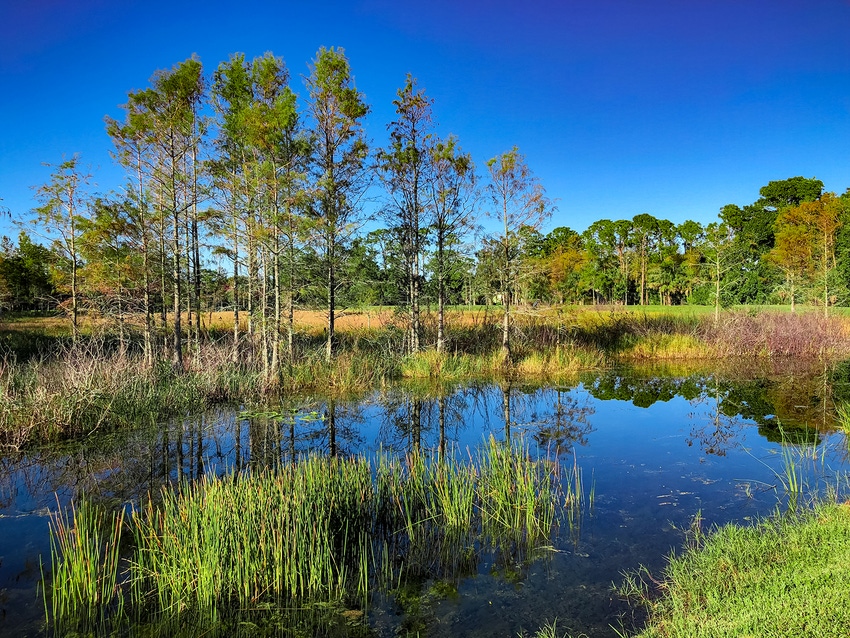
USDA and the Natural Resources Conservation Service will be investing $28 million into wetland projects across the country, three of which are focused on the Lower Mississippi River and will return critical wetland functions to agricultural landscapes according to the acting chief of NRCS, Terry Cosby.
“Wetlands have tremendous benefits ranging from cleaner water, to flood prevention, to enhancing wildlife habitat to sequestering carbon,” said Cosby. “The Wetland Reserve Enhancement Partnership helps partners cover more ground with producers in expanding the footprint of healthy wetlands across our country.”
Since 2014, WREP projects across 11 states have resulted in 136 closed wetland easements and wetland easements pending closure, protecting more than 27,425 acres. In total, NRCS has supported landowners in protecting more than 2.85 million acres through wetland easement programs nationwide.
"People wonder, 'What am I going to do with this land?'" said Cosby. "It's not productive, it floods or there are problems. How can we be sustainable on these acres that flood once every two or three years?"
Beneficial programs
He said that the programs are beneficial, in that the landowner is able to put the acreage in a program and not worry about the effects of flooding or seasonal damage. Partners like The Nature Conservancy, Ducks Unlimited and Mississippi River Trust help to manage the land that goes into the NCRS program and take that burden off of the farmer.
"We've been doing this for over 25 years," he said. "We've got 4.4 million acres under the easement program."
Partners bring potential projects to the NRCS and they are reviewed and ranked based on national and local priorities.
"Parties have an opportunity to bring 10% of the funding to the table," he said. "We have six new projects and we are committing $28 million. The partners are bringing in about $2.8 million, so it's a total investment of almost $31 million for six new projects and four which we already had."
Three projects are located in the lower Mississippi river region and account for about $14.3 million of the total funding.
THREE-STATE PROJECT
One three-state project seeks to enroll an additional 2,000 acres per state, totaling 6,000 acres, in Agricultural Conservation Easement Program (ACEP) Wetland Reserve Easements (WRE) with help from the Nature Conservancy.
The project focuses on restoring forested wetlands within priority portions of the Mississippi Alluvial Valley in Arkansas, Louisiana and Mississippi, including specifically targeting priority watersheds of the Mississippi River Basin Healthy Watersheds Initiative area.
The proposed project is Phase III of a continuing effort that began in 2017. Existing efforts have resulted in more than 3,800 acres of easements that have been acquired or are pending in the project area to date. NRCS will invest $8.35 million for the first year.
Bayou Du Chien
A project on Bayou du Chien in western Kentucky, across the river from New Madrid, Mo., seeks to enroll 2,500 acres over the next three years to improve wildlife habitat through the development of large, contiguous blocks of protected land to benefit priority species.
It also aims to improve water quality in both local watersheds and the greater Mississippi River basin by directly reducing excess nutrients and sediments through floodplain reconnection and restoration. NRCS will invest $3.15 million for the first year.
Batture project
Phase six of the Lower Mississippi River Batture project, with help from the Mississippi River Trust, seeks to build on sustainability efforts and water management in the active floodplain of the Lower Mississippi River, or the Batture, thus providing significant ecological, economic and societal benefits.
Partners propose to facilitate the enrollment of an additional 9,000 acres of privately owned, predominately cleared, flood prone land in wetland easements along the Batture area. The project also helps agricultural producers by removing frequently flooded land from production and eliminating the expenses and subsidies associated with farming that land.
The proposed project is phase six of a continuing effort that began in 2012.
Current efforts under phases one through five have resulted in acquired easements or easements pending for more than 22,000 acres of land in the project area. First-year activities are fully funded by partner contributions.
In total the funding of six new WREP projects and four ongoing projects are enabling conservation partners and producers to work together to return critical wetland functions to agricultural landscapes.
"We're appreciative to these partners for bringing these projects to us," Cosby said. "We look forward to working with more partners as they bring more projects.
"The appreciation also goes to the landowners, letting us do these easements. We can do, anything from 30 years through perpetual. We are just grateful to the landowners for doing this."
About the Author(s)
You May Also Like






